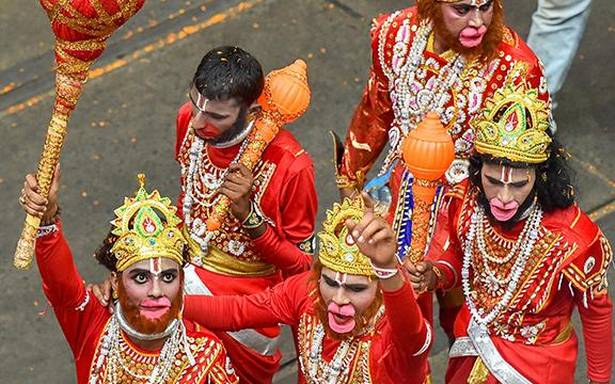Contrary to expectations, the BJP’s appeal among backward classes and the rural poor has petered out
The phrase ‘subaltern Hindutva’ was bandied about quite a lot in academic and journalistic circles during the recently concluded West Bengal Assembly election. Many journalists and scholars covering stories from the field had a common account, that a large section of rural poor, backward classes, Dalits and Adivasis had firmly shifted towards the Bharatiya Janata Party (BJP) under the influence of the Hindutva ideology, and that the Trinamool Congress, which owed its rise to the backward classes in 2011, had become extremely unpopular among them. Some described the movement of these subaltern classes towards the BJP as cultural and political solidarity among Hindus and also a reflection of the dominance of ‘anti-Bhadralok’ (anti-upper caste/class) sentiments in rural areas that the Trinamool Congress had once benefited from.
The post-poll survey data, however, suggest that both the subaltern and bhadralok shift that had taken place towards the BJP on a massive scale in the 2019 Lok Sabha election waned this time and the Trinamool Congress managed to retain much of its lost support among these sections.
Data show that the decline in support for the BJP compared to the Lok Sabha election was the steepest among OBC communities (Yadavs, Kurmis, Kumhars, Lohars, Telis, etc., taken together), falling from over two-thirds (68%) to just half (49%) this time around. Like OBC voters, Adivasi voters, too, were far less enthused by the BJP, and their support fell drastically from 62% to 46%. Most of them made their way back to the Trinamool, which also explains why the ruling party regained lost ground in some of the State’s tribal areas and Scheduled Tribes-reserved seats.
Erosion of Dalit support
Among Dalit communities, too, on whom the BJP invested considerable time and energy this time, the party was simply unable to retain the huge level of support it had garnered two years ago, and much of this was due to the erosion of the Rajbanshi support. The BJP’s vote share among Rajbanshis declined from three-fourths in 2019 to three-fifths this time. This is counter-intuitive since the BJP did well in north Bengal, but the survey data suggest that it was more on account of support from groups other than Rajbanshis and other communities. The only segment of Dalits that the BJP was able to hold on to were the Namashudras (including Matua refugees), but among them, too, the party managed to make only meagre progress, and even that was limited to certain regions. In fact, for the BJP to have had any chance at defeating the Trinamool Congress, it needed to build on its 2019 base among Dalits as a whole. Far from it, it ended up losing some of them.
Finally, as far as the upper castes (Brahmins, Kayasthas, Baidyas, etc.) are concerned, the story for the BJP was no different. Among them, too, the party registered some losses instead of making any gains, falling from 50% in 2019 to 46% this time. However, this modest loss of upper-caste support should not be misinterpreted as a loss of upper-class support for the BJP. Our data do not find them to be synonymous. The BJP actually led the Trinamool Congress by a good 13 and 14 percentage points among upper-class and middle-class Hindus, respectively. It faced some tough competition among the backward classes and the poorest Hindus — the party’s vote share among the poorest Hindus registered a massive 17-percentage-point decline compared to 2019.
The author is a Research Associate at Lokniti-CSDS, Delhi
Source: Read Full Article


